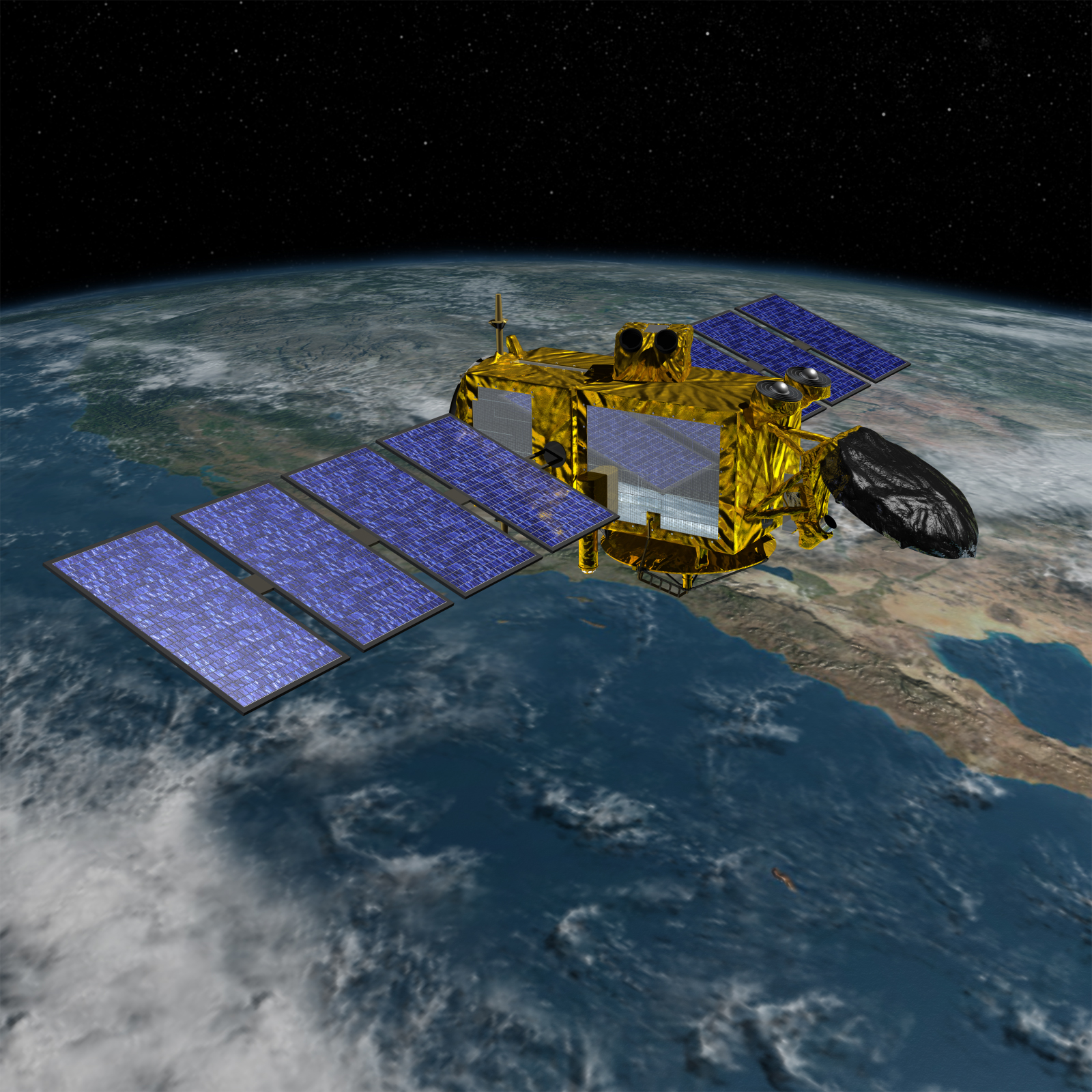 |
| Jason-3 Satellite |
[Satnews] Launching July 22, 2015 will be Jason-3 the newest satellite in a series designed to maintain long-term satellite altimetry observations of global sea surface height.
These data provide critical ocean information that forecasters need to predict devastating hurricanes and severe weather before they arrive onshore. Over the long term, Jason-3 will help us to track global sea level rise, an increasing threat to the resilience of coastal communities and to the health of our environment.
Jason-3’s highly accurate altimetry measurements will be used for a variety of scientific, commercial and operational applications, including:
- Hurricane intensity forecasting
- Surface wave forecasting for offshore operators
- Forecasting tides and currents for commercial shipping and ship routing
- Coastal forecasting for response to environmental problems like oil spills and harmful algal blooms
- Coastal modeling crucial for marine mammal and coral reef research
- El Niño and La Niña forecasting
Extending the timeline of ocean surface topography measurements begun by the Topex/Poseidon and Jason 1 and 2 satellites, Jason 3 will make highly detailed measurements of sea-level on Earth to gain insight into ocean circulation and climate change.
| Like its predecessors (Jason 1 and 2, and Topex/Poseidon), is a cooperative of agencies and organizations around the world. |
Scientific Instrument(s)
- - Altimeter
- - Microwave radiometer
- - Doppler Orbitography and Radiopositioning Integrated by Satellite (DORIS)
- - Laser Retroreflector Array (LRA)
- - Global Positioning System (GPS) receiver
NOAA will contribute to Jason-3's payload and will also be responsible for the launch of the spacecraft. The payload will consist of the same core instruments as Jason-2:
- a Poseidon class Ku/C-band radar altimeter to provide the primary ranging measurement,[ Performances of the POSEIDON-1 radar altimeter, Poseidon Radar Altimeter Flight Model Design and Tests Results]
- a nadir–looking three frequency (18.7, 23.8, and 34.0 GHz) microwave radiometer (as flown on Jason-2), along with
- a POD (Precise Orbit Determination) package consisting of
- a GPS (Global Positioning System) receiver,
- DORIS (Doppler Orbitography and Radiopositioning Integrated by Satellite), and
- a LRA (Laser Retroreflector Array), as flown on prior Jason series missions.
Jason-3 Proteus bus (image credit: CNES, TAS)
Jason-3 is three-axis stabilized and nadir pointing - maintained by reaction wheels and magnetic torque rods. Power (580 W) is provided by two solar panels. A hydrazine propellant system is being used for orbital maintenance. Jason-3 has a launch mass of about 550 kg; the design life is 5 years.
|
Platform dry mass, payload mass
|
277 kg, 255 kg
|
|
Propellant mass
|
28 kg of hydrazine
|
|
Spacecraft launch mass
|
553 kg
|
|
Electrical power
|
550 W (EOL)
|
|
Spacecraft pointing accuracy
|
0.15º (1/2 cone)
|
|
Onboard data storage capacity
|
2 Gbit
|
|
Spacecraft design life
|
5 years
|
Parameters of the Jason-3 spacecraft
RF communications: Downlink data rate at 838 kbit/s (S-band, QPSK
modulation), uplink at 4 kbit/s (S-band). The CCSDS communication
protocol standard is used in the forward and return link mode (use of
virtual channels). Convolutional coding is also applied to telemetry.
Illustration of the Jason-3 spacecraft (image credit: CNES)
Launch: A launch of the Jason-3 is scheduled for mid-2015. 14)
In July 2012, NASA contracted SpaceX (Space Exploration Technologies) of Hawthorne, CA to launch Jason-3 aboard a Falcon 9 V1.0 rocket from Complex 4 at VAFB (Vandenberg Air Force Base), CA. 15)
In July 2012, NASA contracted SpaceX (Space Exploration Technologies) of Hawthorne, CA to launch Jason-3 aboard a Falcon 9 V1.0 rocket from Complex 4 at VAFB (Vandenberg Air Force Base), CA. 15)
Orbit: Circular non‐sun‐synchronous orbit; 1336 km altitude (2 hour
period), inclination = 66.038º, 9.9 day repeat orbits (127 revolutions),
ground track repeatability = ±1 km cross‐track at the equator. The
drift of the orbital plane with respect to the inertial reference frame
is -2º per day.
No comments:
Post a Comment